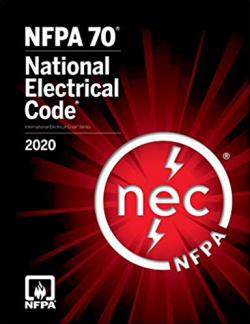
Overview
Sources for More Information
Arc flash is a far-reaching topic. In fact, a recent Internet search on that phrase returned more than 40 million references. To save you time, we've compiled this handy directory of information sources.
FAQs
Here are some common questions regarding current-limiting fuses, hazard analysis and safe work practices, along with answers provided by Mersen engineers. Have a question you don't see answered? E-mail us at TechnicalServices.EP@mersen.com or call Technical Services at 978-465-4853.
What is meant by electrode configuration? How do I choose one?
As part of the data for the arc flash calculation, the equipment conductor configuration that most closely resembles the actual electrode configurations need to be identified.
What is meant by the phrase “exposed to the arc flash hazard” in NFPA70E?
Each task performed in the electrical working zone has been analyzed and the likelihood of an arc flash injury maybe present.
Why has the guidance on arc flash calculations changed in IEEE 1584-2018?
IEEE 1584 was originally released in 2002 and became the premier standard for arc flash hazard arcing current, incident energy, and arc flash boundary calculations. The 2002 release contained one electrode orientation and two configurations. IEEE 1574-2018 model was developed from further testing organized by the IEEE/NFPA Collaborative Arc Flash Reseach project with the main purpose of adding enough data to add additional test setups with new electrode configurations.
Do I need to change my arc flash labels if calculations with the new IEEE 1584-2018 model are different?
Yes. The IEEE 1584-2018 has the most current model and equations. Labels provide information about hazards that workers need to use correct safety procedures and PPE. The NFPA 70E requires new arc flash labels to convey the results of any new arc flash study.
I've heard that under certain conditions, current-limiting fuses can allow for high incident energies when the fault current is low. What can we do in these cases?
Tests have shown that under most conditions, Class J, Class RK1 and Class T fuses can limit incident energies to low levels at typical working distances. The key to acceptable arc flash mitigation is to apply the fuse where the expected level of arc fault current will be large enough to drive the fuse into current-limiting mode.
Many times, the switch from Class RK5 fuses to Class RK1 or Class J fuses addresses the issue of lower fault currents. Going to lower ampere ratings where load currents allow can also address these issues. For applications where the expected arc fault current would be lower than current-limiting threshold of these fuses, consider solutions discussed under Addressing High Incident Energy due to Low Fault Currents.
During a flash hazard analysis, is it necessary to calculate arc fault current when using current-limiting fuses?
Yes. With the new IEEE 1584-2018 model, it is now recommended that the let through current for the calculated arc fault current be used in the final incident energy calculation.
- More about arc flash energies
- Go to Arc Flash Calculator
When using a current-limiting fuse, how can you calculate the arc flash current when you know the short circuit current?
Arc fault currents can be estimated through various models, such as the method identified in IEEE 1584, Guide for Performing Arc Flash Calculations.
- Download our white paper, "Improved Method for Arc Flash Hazard Analysis"
- Go to Arc Flash Calculator
Are arc flash calculations required for control panels containing only finger-safe terminals and insulated cable?
Most experts recommend calculations for such panels because of field experiences. Although IP20 grade finger-safe devices do minimize the probability of incidental contact, they are likely to be compromised in the presence of an arc flash explosion. If there is a possibility of an arc being established, you will need to take the steps necessary to protect workers from the potential hazard.
It seems like selectivity is always lost when current-limiting fuses are used. True?
False. In fact, quite the opposite is true. Amp-Trap 2000® fuses will be selective for all levels of overcurrents, as long as the ampere rating of the upstream Amp-Trap 2000 fuse is twice that of the downstream fuse.
We have a small organization with various 480V MCCs. Is it possible to perform our own study or do we need to enlist an engineering company?
Although it is certainly possible to perform your study using tools such as those provided with IEEE 1584, Guide for Performing Arc Flash Calculations, there may be benefits in working with an engineering firm. They include the extra manpower, the availability of expensive software tools, better familiarity with standards and regulations, and improved efficiency.
For arc flash calculations, are fuses from various manufacturers interchangeable as long as the UL class stays the same?
For most applications this is true. However, there may be cases where certain brands may have superior performance compared to other fuses of the same class. An example is the Amp-Trap® High-Speed J.
Originally designed to provide protection for semiconductors in soft-starters, the High-Speed J has a low current-limiting threshold that provides a wider range of low arc flash energy protection. Plus, it's usually easier to ensure fuse coordination when you standardize on one brand of fuses.
While checking for "no voltage" after deenergizing a circuit, do the requirements for PPE still apply?
Yes. Until it is proven that the equipment is electrically safe, workers must use the PPE that would be appropriate for the task if the equipment were in an energized state. Errors in one-line diagrams, labeling errors, opening the wrong disconnect device, and back-fed equipment are some of the situations where equipment could still be energized while workers are doing the verification. Without the proper PPE, workers could be seriously injured.
What is required of infrared thermographers who do not open or touch equipment, but only view the equipment through an IR imager (camera) after the panels have been opened?
If thermographers go within the safety boundaries delineated in NFPA 70E, they need to comply with the appropriate guidelines. If, for example, they need to operate within the flash-protection boundary, they need to wear the PPE and arc-resistive clothing dictated by the calculations at their closest working distance.
What is the reliability of overcurrent protection over time?
Amp-Trap 2000® fuses can be expected to provide reliable current-limiting performance for over 20 years if they are not physically damaged or continually utilized above their ampere rating. Since the current-limiting action of a fuse requires a fixed mass of copper or silver to melt, the fuse's speed of response is not affected with the passage of time. Consequently, there's no need for the periodic recalibration that might be required for an electromechanical device.
Show lessArticles and White Papers
White Papers
Exposed to the Arc Flash Hazard.
© 2014 IEEE. This material is posted here with permission of the IEEE.
Investigation of Factors Affecting the Sustainability of Arcs Below 250V.
© 2012 IEEE. This material is posted here with permission of the IEEE.
Impact of Arc Flash Events With Outward Convective Flows on Worker Protection Strategies.
© 2011 IEEE. This material is posted here with permission of the IEEE.
Optimizing Circuit Breaker Instantaneous Trip Settings for Selectivity and Arc Flash Performance Simultaneously
© 2010 IEEE. This material is posted here with permission of the IEEE.
Arc Flash Basics: Testing Update
© 2007 ICEFA. This material is posted here with permission of the ICEFA.
Effect of Insulating Barriers in Arc Flash Testing
© 2007 IEEE. This material is posted here with permission of the IEEE.
Effect of Electrode Orientation in Arc Flash Testing
© 2005 IEEE. This material is posted here with permission of the IEEE.
Improved Method for Arc Flash Hazard Analysis
© 2004 IEEE. This material is posted here with permission of the IEEE.
Tech Topics
Arc Flash Note 1: Multiple Hazards of Arcing Faults
Arc Flash Note 2: Reducing Arc Energies with Current-Limiting Fuses
Arc Flash Note 3: Arc Flash Hazard Analysis
Arc Flash Note 4: Reduce Arc Flash Energies by Upgrading to A6D Class RK1 Fuses
Arc Flash Note 5: Reduce Arc Flash Energies by Reducing Fuse Ampere Rating
Arc Flash Note 6: Reducing Arc Flash Energies on Transformer Secondaries
System Protection Note 2: Achieving Maximum Benefits with a Fuse Protected Motor Control Center
Standards & Codes Note 1: Achieve Higher SCCRs for Industrial Control Panels
Component Protection Note 2: Enhancing Short Circuit Safety with Type 2 Coordination for Motor Starters
Component Protection Note 4: Important Changes to UL 1449 Safety Standards for Surge Suppression
Photovoltaic Protection Note 5: Sizing Fuses for Photovoltaic Systems per the National Electrical Code
Surge Protection Note 1: Introduction to Specifying Surge Protection
Surge Protection Note 2: Surge-Trap and the different kA Ratings
Arc Flash Articles
Calculating Arc Flash Hazard Levels, Pure Power, Winter 2008
Discover common mistakes in calculating arc flash hazard levels and how to avoid them.
Improving protection, reducing costs, PlantServices.com, March 2009
Every maintenance professional should know how to select the proper fuse for the application.
Is Your Electrical PPE Adequate?, Maintenance Technology, August 2007
Key Changes to the 2011 National Electric Code, IMARK NOW, November 2010
Mersen weighs in on the critical updates
Manage Your Fuse Inventory With 5S - Sort, set location, straighten, standardize and sustain to eliminate waste, Plant Services, 2011
Author: David Komm, Technical Services-Supervisor, Mersen
The Fuse Protection Review: Consolidating Inventory Reduces Costs and Upgrades Safety, Plant Services, June 2003
The SCCR Liability Trap:What you need to know about the new short circuit current rating (SCCR) requirements, EC&M, February 2010
The time is now to implement 7 critical updates to NFPA 70E, Plant Engineering, July 2010
Tip Sheets
5S Your Fuse Inventory with Mersen's Fuse Control™ Program
Complying with OSHA IC Requirement for Fuses
How Many Fuses Will Open On a Short Circuit?
Navigating Selective Coordination
Reducing Fuse Ampere Rating Can Reduce Arc Flash Hazard
Three Clues for Detecting When is a Fuse Too Old for Storeroom Inventory?
Show lessBooks and Standards
To purchase any of these books and standards, simply click on the title.

NFPA 70 National Electrical Code, 2020 Edition
Throughout the United States and around the world, NFPA 70®: National Electrical Code® (NEC) sets the foundation for electrical safety in residential, commercial, and industrial occupancies.
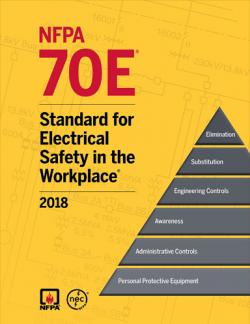
NFPA 70E®: Standard for Electrical Safety in the Workplace®, 2018 Edition
Shock, electrocution, arc flash, and arc blast are responsible for one worker death per day and 3,600 disabling injuries per year on average in the United States. Now NFPA 70E — the Standard developed for OSHA — is revised to address safety gaps and increase electrical worker protection, while helping companies comply with OSHA 1910 Subpart S and OSHA 1926 Subpart K. Major changes recognize new hazards and address safety gaps. These OHSA standards are still current.
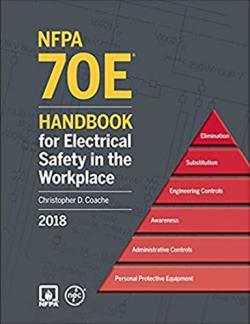
NFPA 70E®: Handbook for Electrical Safety in the Workplace, 2018 Edition
Electricity and its dangers are not selective — they put both experienced and inexperienced workers at deadly risk. Every year some 3,600 workers are permanently disabled, and, on average, one worker per day is killed. Make sure you understand and can apply the strengthened safeguards in the NFPA 70E that can prevent electrical injuries and deaths. Protect your workers and your business with solid answers and advice in the NFPA 70E Handbook.
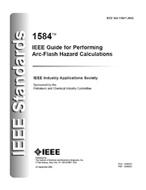
1584-2002 IEEE Guide for Arc Flash Hazard Calculations
This guide provides designers and facility managers with techniques for determining arc flash hazard distances and the incident energy employees could be exposed to while working on or near electrical equipment.
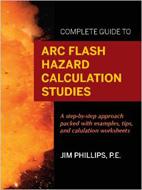
Complete Guide to Arc Flash Hazard Calculation Studies, Jim Phillips
There are many codes and standards regarding electrical safety and the arc flash hazard. However, no individual standard ties together the requirements of an Arc Flash Hazard Calculation Study: Calculations, Practices, System Modeling, Analysis, Recommendations. Using a series of flow charts, examples and calculation worksheets, the study process is broken down into a detailed step by step approach.
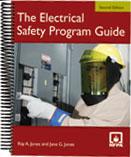
The Electrical Safety Program Guide
A step-by-step guide to establishing a comprehensive electrical safety program.

Electrical Safety in the Workplace
This extensive guide from NFPA teaches individuals about safe work procedures and provides companies with a process for defining and implementing effective electrical safety programs.
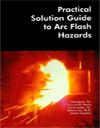
Practical Solution Guide to Arc Flash Hazards
This useful reference is provided by ESA, the company behind EasyPower® power engineering software.
Show lessTechnical Services
For answers to your questions about arc flash hazards, current-limiting fuses and circuit protection in general, call or email any member of Mersen's Technical Services staff.
Technical Services: North America
374 Merrimac Street
Newburyport, MA 01950-1998
Phone: 978-465-4853
Fax: 978-465-6419
Email: Technical Services
Kimberley Walters
Senior Applications Engineer
Phone: 978-465-4853
Toll-Free Fax: 800-535-8103
Email: Technical Services
JT Sheehan
Technical Services Supervisor
Phone: 978-465-4853
Toll-Free Fax: 800-535-8103
Email: Technical Services
Field Engineering
Mike Lang
1135 Arya Drive
Roswell, GA 30076
Phone: 770-740-1315
Fax: 770-740-0647
Email: Mike Lang
Dave Komm
21 Pingree Farm Road
Georgetown, MA 01833
Phone: 978-912-4969
Email: Dave Komm
Brad Fox
1557 Briarhollow Ln
Highlands Ranch, CO 80129
Phone: 720-403-4833
Email: Brad Fox
Jeremy Lieland
6472 E County Road 1600N
Batesville, IN 47006
Phone: 812-212-3112
Email: Jeremy Lieland
David Semien
2210 W Dallas St
Houston, TX 77019
Phone: 496-332-7320
Email: David Semien
Lazo Angelopoulos
Mersen Canada Toronto Inc.
6200 Kestrel Road
Mississauga, ON L5T 1Z1
Canada
Phone: 416-253-8537
Email: Lazo Angelopoulos
Show less
Training
Anyone, Anytime, Anywhere. That's Mersen's philosophy when it comes to ensuring that workers who specify or change fuses know the hazards of misapplications and the fundamentals of fuse safety.
When you standardize your fuse inventory on our Amp-Trap 2000® family of current-limiting fuses, we'll present customized in-house training sessions for your engineers, electricians and non-technical employees.
Whether you want to educate five people or 50, we'll provide you the training you want at times convenient to you — and at no charge. Here are just some of the topics we cover:
- Short circuit hazards and protection
- Fundamentals of Arc Flash Hazards
- Fundamentals of low-voltage fuse classes
- Conductor protection
- Motor circuit protection
- Transformer protection
- Overcurrent protection coordination concepts
- Special considerations in series rating
- International fuses
- Fundamentals and application of medium-voltage fuses
- Fundamentals of semiconductor overcurrent protection
- DC circuit protection basics
Click here to learn more about our training seminars.
References
References
National Electrical Code®, 2020 ed., National Fire Protection Association.
NFPA 70E: Standard for Electrical Safety Requirements for Employee Workplaces, 2018 ed., National Fire Protection Association.
D.R. Doan and R.A. Sweigart, "A Summary of Arc Flash Energy Calculations," IEEE Transactions on Industry Applications, Vol. 39, No. 4, July-August 2003, pp. 1200-1204.
T. Gammon and J. Matthews, "Conventional and Recommended Arc Power and Energy Calculations and Arc Damage Assessment," IEEE Transactions on Industry Applications, Vol. 39, No. 3, May-June 2003, pp. 594-599.
A.D. Stokes and D.K. Sweeting, "Electric Arcing Burn Hazards," International Conference on Electric Fuses and Their Applications, Gandsk, 2003.
R. Wilkins, M. Allison and M. Lang, "Time-Domain Analysis of Arc Fault Hazard," International Conference on Electric Fuses and Their Applications, Gandsk, 2003.
IEEE 1584: Guide for Performing Arc-Flash Hazard Calculations, IEEE, September 2002.
R.L. Doughty, T.E. Neal, G.M. Laverty and H. Hoagland, "Minimizing Burn Injury: Electric Arc Hazard Assessment and Personal Protection," IEEE Industry Applications, May-June 2002, pp. 18-25.
R.A. Jones, L.B. McClung and J.J. Andrews, "NFPA 70E Changes for Year 2000," IEEE Transactions on Industry Applications, Vol. 37, No. 4, July-August 2001, pp. 1167-1173.
T. Gammon and J. Matthews, "Instantaneous Arcing-Fault Models Developed for Building System Analysis," IEEE Transactions on Industry Applications, Vol. 37, No. 1, January-February 2001, pp. 197-203.
R.L. Doughty, T.E. Neal, T.L. Macalady and V. Saporita, "The Use of Low-Voltage Current-Limiting Fuses to Reduce Arc Flash Energy," IEEE Transactions on Industry Applications, Vol. 36, No. 6, November-December 2000, pp. 1741-1749.
R.L. Doughty, T.E. Neal, T.A. Dear and A.H. Bingham, "Testing Update on Protective Clothing and Equipment for Electric Arc Exposure," IEEE Industry Applications, January-February 1999, pp. 37-49.
S. Jamil, H.L. Floyd and D.A. Pace, "Implementing Electrical Safety Regulations and Standards," IEEE Industry Applications, January-February 1999, pp. 16-21.
R.L. Doughty, T.E. Neal and H.L. Floyd II, "Predicting Incident Energy to Better Manage the Electric Arc Hazard on 600V Distribution Systems," Proc. IEEE PCIC, September 1998, pp. 329-346.
M. Capelli-Schellpfeffer, R.C. Lee, M. Toner and K.R. Diller, "Correlation Between Electrical Accident Parameters and Injury," IEEE Industry Applications, March-April 1998, pp. 25-31.
R.A. Jones and other members of IEEE-PCIC working group, "Staged Tests Increase Awareness of Arc-Flash Hazards in Electrical Equipment," IEEE Petroleum and Chemical Industry Conference Record, September 1997, pp. 313-332.
T.E. Neal, A.H. Bingham and R.L. Doughty, "Protective Clothing Guidelines for Electric Arc Exposure," IEEE Transactions on Industry Applications, Vol. 33, No. 4, July-August 1997, pp. 1043-1054.
R. Wilkins, "Standard Fuse Model for System Short-Circuit Studies." 8th International Symposium on Switching Arc Phenomena, TU Lodz, Poland, 1997, pp. 163-166.
H. Schau and D. Stade, "Requirements to Be Met by Protection and Switching Devices From the Arcing Protection Point of View," Proceedings of 5th International Conference on Electric Fuses and Their Applications, Technical University of Ilmenau, Germany, September 1995, pp. 15-22.
J. Paukert, "The Arc Voltage and the Resistance of LV Fault Arcs," 7th International Symposium on Switching Arc Phenomena, TU Lodz, Poland, 1993, pp. 49-51.
R.L. Doughty, R.A. Epperly and R.A. Jones, "Maintaining Safe Electrical Work Practices in a Competitive Environment," IEEE Transactions on Industry Applications, Vol. 28, No. 1, January-February 1992, pp. 196-204.
A.D. Stokes and W.T. Oppenlander, "Electric Arcs in Open Air," J. Phys. D: Appl. Phys., Vol 24, 1991, pp. 26-35.
R.H. Lee, "Pressure Developed by Arcs," IEEE Transactions on Industry Applications, Vol. IA-23, No. 4, July-August 1987, pp. 760-764.
R. Wilkins, "3-Phase Operation of Current-Limiting Power Fuses," 3rd International Conference on Electric Fuses and Their Applications, Eindhoven, 1987, pp. 137-141.
M.N. Ozisik, "Heat Transfer," McGraw-Hill, 1985.
R.H. Lee, "The Other Electrical Hazard: Electric Arc Blast Burns," IEEE Transactions on Industry Applications, Vol. IA-18, No. 3, May-June 1982, pp. 246-251.
V.P. Ignatko, "Electric Characteristics of AC Open Heavy-Current Arcs," 3rd International Symposium on Switching Arc Phenomena, TU Lodz, Poland, 1977, pp. 98-102.
L.E. Fisher, "Resistance of Low-Voltage Arcs," IEEE Transactions on Industry and General Applications, Vol. IGA-6, No. 6, November-December 1970, pp. 607-616.
Show less